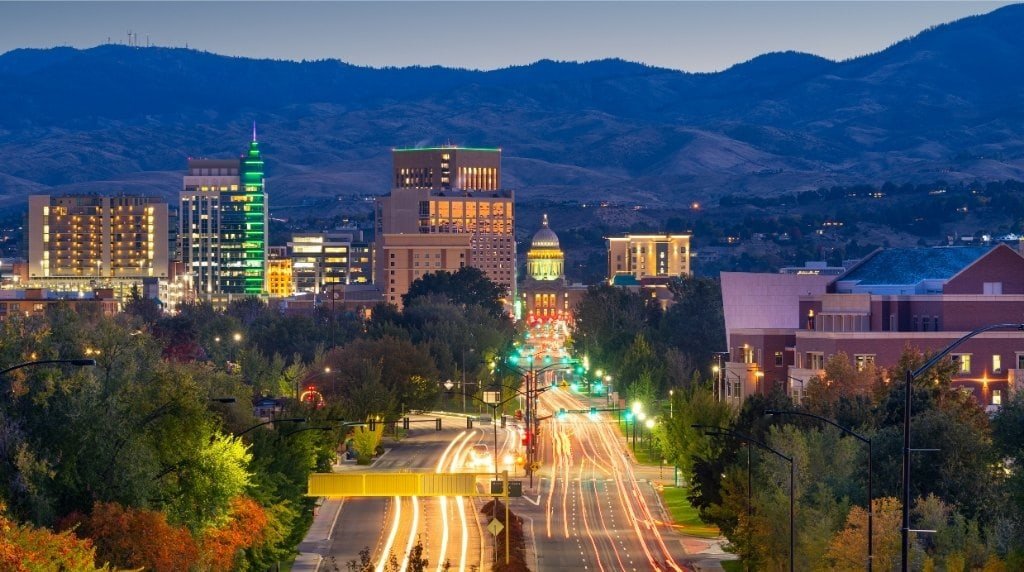
Your guide to exploring Boise's best neighborhoods – and what makes them top notch
When hunting for a new home, people often forget to look beyond the four walls in front of them to think about how the neighborhood would support their lifestyle. But your neighborhood can be more than just a place to commute to and from – it can be the place you take long runs to unwind after work, or the home of your favorite brunch spot. It can be where you find community.
Neighborhoods are like people, full of quirks and strengths and weaknesses that are wholly unique. Picking the best one for your lifestyle and needs is important. That’s why we’re here to help.
Below, you’ll find the best neighborhoods in Boise hand-picked by us for their strengths, including community spirit, proximity to popular restaurants or the best wide-open spaces, great schools, unique character, and the one-of-a-kind “wow” factors that longtime residents treasure. Whether you gravitate towards wanting convenience or solitude, cultural delights or tasty food, these neighborhoods deliver.
If you find a neighborhood below that speaks to you, be sure to be in touch. We’ll be happy to help you find your next dream home.
North End
While the most obvious draw to the North End is its postcard-picturesque bungalows and central location, many residents say its well-organized neighborhood association is one of the area’s greatest strengths.
We know that sounds geeky, but bear with us: The North End Neighborhood Association (NENA for short) is the city’s oldest neighborhood association. It’s large, well organized, and well funded. Its members also illustrate the typical North Ender – passionate people who believe in the grassroots power of building community, and will do anything to ensure their neighborhood is top-notch.
NENA members have been advocating for things like historic preservation in the neighborhood since 1976. They’re visionaries who know how to get their voices heard in City Hall and their projects funded. Additionally, the group helps run two of the most beloved homegrown events in Boise: Halloween on Harrison Boulevard – an event that routinely draws thousands of children and their families from across the county – and the Hyde Park Street Fair.
The annual Hyde Park Street Fair is a chance for residents to break out their un-ironic tie-dye and retro hula hoops, spritz on some patchouli and head down to Camel’s Back Park for a weekend of live music, endless drum circles, and homemade crafts. (Longtime locals will tell you about how the original fair was held in historic Hyde Park before popularity drove it to Camel’s Back.) With beer gardens, donated couches, belly dancers and crowds of kids running around, it captures one aspect of the neighborhood’s character perfectly.
Thanks to its central location, the North End also attracts Type A outdoorsy individuals. It’s not unusual for residents to squeeze in an hour-long run up 8th Street or ride up Bogus Basin Road before or after work.
Home prices in the North End start at under $500,000, but for that price, you can expect a cozy two bedroom one bath pre-1950s Bungalow with minimal updating.
For the neighborhood's median home price of $700,000, you can expect turn of the century to post-war period-revival architecture. In the million-dollar range, you can find a stately mansion on historic tree-lined Harrison Boulevard or one of its quieter side streets.
Because of the neighborhood’s popularity and age – it was one of Boise’s original neighborhoods – it has about double the population density of most other areas of the city. You will also find smaller footprints and more compact yards. In addition, nearly half of North End homes are rentals, as the area has become very popular with investors over the years.
East End
The East End attracts residents who prize the neighborhood’s top-rated schools, music lovers who enjoy being within earshot of the popular Outlaw Field’s Summer Concert Series at the Idaho Botanical Garden, and perhaps most importantly of all, people who value quick and easy access to the Greenbelt and Boise River.
This is among the greatest neighborhoods in Boise for families, praised by parents for its highly-rated neighborhood schools. Plus, there is plenty to see and do without ever getting in the car – from hiking the Military Reserve trail system, to biking the Greenbelt, to attending Winter Garden Aglow at the Botanical Garden, with its more than 550,000 twinkling lights.
These attributes not only attract new residents, they cause people to settle in for life and really make the neighborhood their home.
When hunting for homes, history and architectural buffs are drawn to the East End’s Warm Springs Historic District. The district is anchored by Warm Springs Avenue, home to stately million-dollar mansions, with the oldest properties dating back to the late 1800s.
The East End neighborhood may be best known for its historical homes but you’ll find everything from 1900s Craftsman to mid-century clinker brick to sleek new construction. There are select homes available at $600,000, but you can expect to pay the neighborhood’s median home price of $755,000 if you want a suite of housing sizes and styles to choose from.
The homes get newer and larger as you move north, where the streets follow the topography of the foothills all the way to Table Rock. These foothills homes were typically built from the 1970s and onward. Many are over 2,800 square feet and custom-built, with no two alike.
These residents love cheering on the cult classic Race to Robie Creek, billed as “the toughest race in the Northwest,” as it winds past their homes each spring.
Highlands
“Serene” is the first word that springs to mind when describing Boise’s Highlands neighborhood, nestled in the Boise foothills. Residents sing its praises, among them: large lots, quiet streets, and sweeping views of the city below and the foothills above.
In the Highlands, you’ll find well-educated neighbors who garden and golf on the weekends. This is also among the most desirable neighborhoods because of its school system – Highlands Elementary, North Junior High and Boise High School are among the city's highest-rated schools.
The Crane Creek Country Club, situated in the center of the neighborhood, is also a draw for residents who want exclusive access to the golf course and community pool, and a well-heeled way to meet and mingle with neighbors.
This neighborhood retains the style and feel of a mid-century suburb, and attracts homeowners who crave that lifestyle. Many of the ranch-style and Mid-Century Modern homes were designed in the mid-1950s and ‘60s for upper-middle-class families and built with an eye for longevity and liveability – like larger lot sizes and thoughtful landscaping. That is a key difference: whereas many neighborhoods from this era were built quickly and cheaply, Highlands homes were built to last.
The Lower Highlands offer some of the best examples of mid-century architecture you’ll find anywhere in the Treasure Valley. It’s also priced slightly below the neighborhood’s median $800,000 price point. Here, with a little patience, you can still find an untouched Mid-Century Modern to call your own.
As you move north into the Upper Highlands, you’ll find homes built into the foothills in the 1980s to new construction. These homes average over 3,800 square feet and feature price tags of one million or more, with the most coveted homesites offering dramatic views of the golf course or stunning city vistas.
Regardless of your location in the neighborhood, on quiet nights, you can still hear the rustle of famous former resident J.R. Simplot’s 30-by-50-foot American flag flapping in the wind atop nearby Simplot Hill, or the distant “yip” of coyotes calling to each other.
Southeast Boise
Stretching from Boise State University to Bown Crossing and Barber Park to the Oregon Trail, Southeast Boise is one of the largest and most diverse Boise neighborhoods.
College students and young professionals, both drawn to the area because of its easy commute to downtown and the university, give the neighborhood an exciting buzz and help support a diverse array of local businesses – from Korean BBQ chicken takeout to the vegetarian and vegan favorite, Locavore. In fact, this is among the best Boise neighborhoods if you love frequenting locally-owned shops and restaurants. There are more here than just about anywhere else in the city.
Residents also find many reasons to play in Southeast Boise. Southeast enders have the most unrestricted access to the river in the city and its 25 miles of Greenbelt trails, which will take bike riders east to Lucky Peak and west beyond Eagle.
It’s not uncommon to see couples biking along the Greenbelt to hit dinner at Barbacoa or another popular restaurant on the neighborhood’s "Main Street," otherwise known as Boise Avenue/Parkcenter Avenue.
While they sell quickly, you can easily find a starter home in the neighborhood for under $400,000. If you’re in the median price range of $510,000, you’ll be able to choose from 60 to 80 new listings per week, making homes easier to find than many other neighborhoods.
If you’re looking for a more tranquil setting, the established "Boise River Corridor" communities are set on private, tree-lined streets blocks from the Boise River and Greenbelt. With list prices that range from $700,000 to well over $1 million, buyers have been known to wait years for these coveted properties.
South of Gowen Road, new construction is booming, with many homes priced between $500,000 and $800,000. While it does resemble tract housing, homes here are on the larger side with a price per square foot that is a relative bargain compared to other neighborhoods on this list.
Barber Valley
If you’re part of the jet(ski) setting crowd, you will find your dream home in Barber Valley. This neighborhood practically counts Lucky Peak as its backyard, and it’s not uncommon to see neighbors loading up boats, kayaks and anything else that floats for a day of sun and exploring up at the reservoir.
This East Boise neighborhood is one of the city’s newest, with the majority of homes built after 2000. When not on their boats, you’ll find residents exploring the nearby foothills or taking leisurely bike rides through the neighborhood. One perk of living in a new neighborhood is that there are more sidewalks and bike lanes here than you’ll find in most other areas of Boise.
For these reasons, Barber Valley attracts outdoorsy, high-income professionals who don’t want the headache of wrestling with a fixer-upper.
The median home price is $800,000, but newer homes in the foothills with dazzling views of the valley will be priced at one million or more. Here, you’ll find Traditional-style houses from the 2000s, as well as newer Contemporary Prairie and Northwest Craftsman-style homes.
Despite the average housing size of 2,400 square feet, lots are smaller here than other neighborhoods, which appeals to people looking for a “lock it and leave” lifestyle. Instead of large yards that take time and effort to maintain, you’ll find deliberately cultivated neighborhood spaces, preserved green areas, and wildlife habitat all meant to foster a sense of community.
Most of the neighborhood's homes are single-family. Still, several townhouse developments have been constructed in recent years, and more condos and townhouses are in planning and early construction phases.
That said, Barber Valley’s population of 5,000 is only expected to grow to roughly 7,000 over the next 10-15 years due to the neighborhood's intentional growth limits. This balance between growth and preservation has added to its popularity among residents.
Depot Bench
This neighborhood often flies under the radar, but those who call the Depot Bench home stay for the long haul because of its bountiful and mature trees, seven city parks – including the popular Morris Hill Dog Park – and one-of-a-kind community events, like Deli Days, a nearly 40-year-old Jewish food festival held at Idaho’s oldest synagogue. Many residents have fond memories of sampling their first knish or biting into the best pastrami sandwich in town during this beloved cultural event.
The neighborhood is full of history buffs who will tell you all about the synagogue, or the history of Morris Hill Cemetery (one of the oldest in the Treasure Valley) or the beautifully preserved Boise Depot. There’s even a historic self-guided walking tour created by the neighborhood association.
Given its love affair with history, it’s fitting that the neighborhood is perfect for buyers hunting for a time-capsule fixer-upper they can lovingly restore.
The Boise Bench entered a renaissance in the early 2000s, heavily driven by the architectural gems found here. Stepping into homes in this area still feels like a throwback to another era, one in which you’ll find many 1930s, ‘40s, and ‘50s houses in near original condition. Some are even being sold by the original owners.
For the Depot Bench's $490,000 median price point, you can expect to find single-story wood or brick exteriors in renovated condition. Many feature original architectural details, where fireplaces and hardwood floors abound.
Seemingly every street in this neighborhood offers a reward for the adventurous buyer. From Spanish Mission and Colonial Revival to European-style Cottages and category-defining Mid-Century Moderns, you could spend all day under a canopy of trees, exploring the Depot Bench's "pocket neighborhoods" and hidden architectural gems.
Hidden Springs
We round out our list of best neighborhoods in Boise with Hidden Springs. If you’ve ever fantasized about escaping the city for a simpler life of pastoral bliss, only to be grounded back in reality by all the things you’d miss – exercising at the gym, easy access to groceries, neighborhood block parties – you may find your next home here.
This neighborhood is nestled among the foothills just minutes northwest of Boise – close enough to town for an easy commute or date night, but far enough away to get breathtaking views of starry skies undiminished by the glow of city lights.
The 20-year-old master-planned community encompasses roughly 800 homes set on 1,844 acres in the Dry Creek Valley, 988 acres of which are preserved as open space for wildlife habitat. While the views are pastoral, the neighborhood has all of the convenience of a small town: shade-covered sidewalks and walking paths, a clubhouse and fitness center (with pool), and a Village Center that’s home to its very own Dry Creek Mercantile.
Residents here live a very comfortable but laid-back lifestyle – they crave that balance between solitude and intimate community. In Hidden Springs, they’ve found it.
Near the Village Center, you’ll find an eclectic mix of homes with architectural designs reminiscent of Boise’s more historic districts. Victorians and Craftsman-style properties stand side-by-side with Traditional and Farmhouse-style houses you would expect to see in a rural (albeit upscale) community. Most homes have welcoming front yards with wide porches and the occasional porch swing, with garages tucked in back.
The majority of the homes in Hidden Springs were built between 1999 to 2015. For the median price of $750,000, you can expect a roomy three to four-bedroom detached home on roughly a quarter of an acre. While the neighborhood design guidelines ensure you won’t find many cookie-cutter McMansions, they also make five and six-bedroom houses more rare.
As you move past the valley and the Dry Creek River into the foothills and orchards, the prices grow with the back yards, square footage, and views. Regardless of your location, don’t be surprised if your neighborhood visitors include families of deer and brave rabbits, or that howling coyotes might become the soundtrack to your dreams.


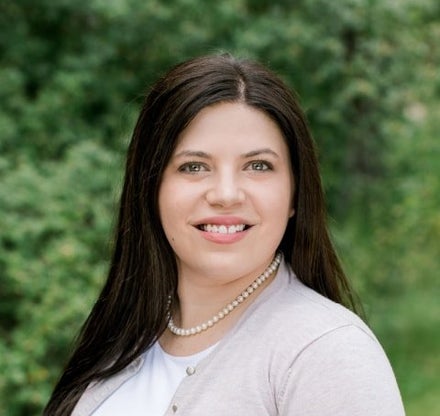
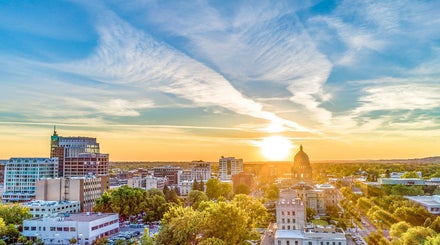
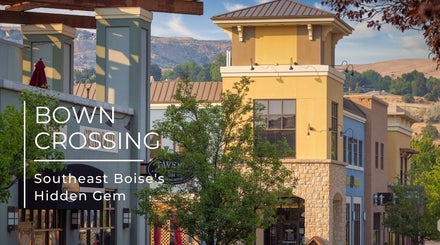
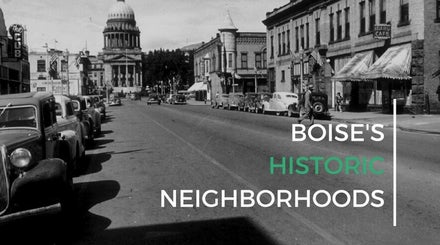
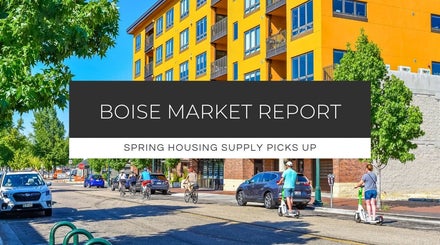
Leave A Comment